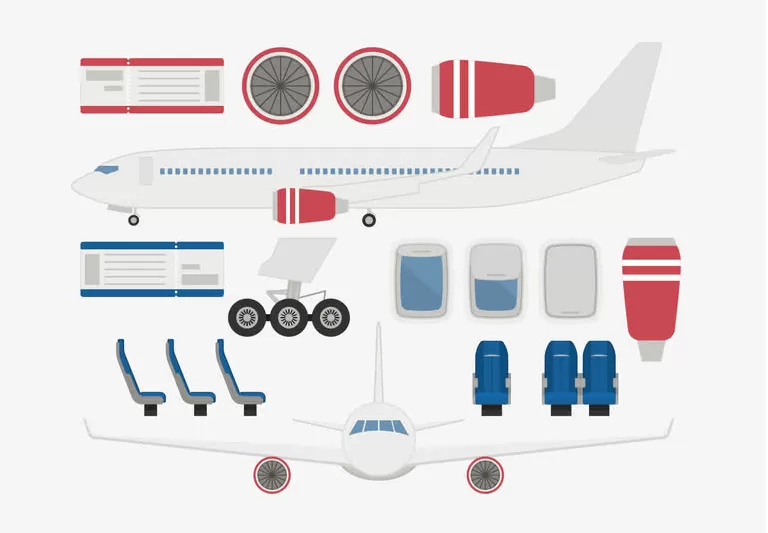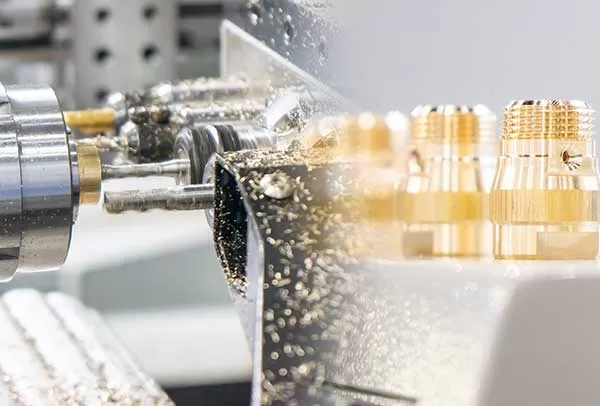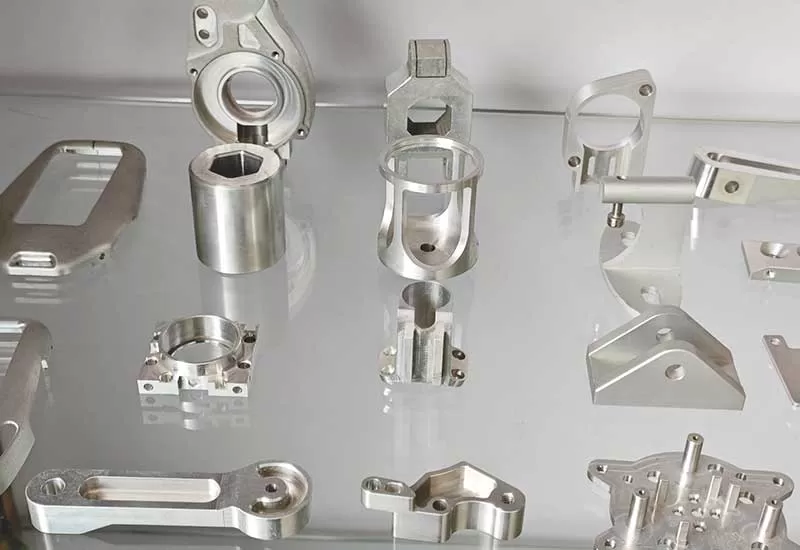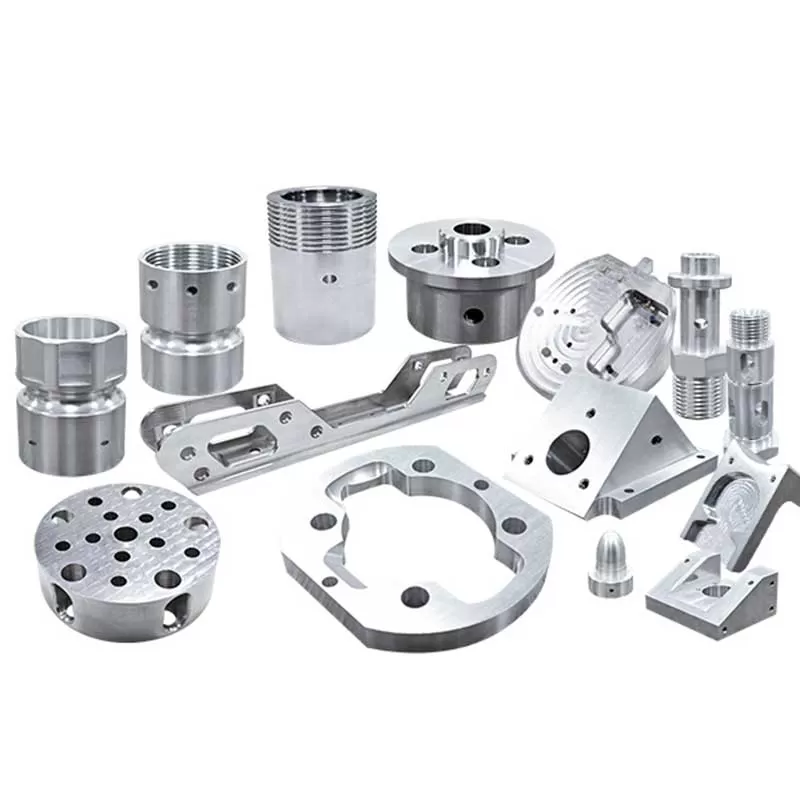In today’s extremely competitive environment, the aerospace industry is constantly looking for innovative solutions to meet extremely harsh working environments and highly complex requirements. Custom CNC prototype and part manufacturing, as an advanced manufacturing technology, plays a vital role in the aerospace field.
This article will delve into why custom CNC prototypes and parts are so important in the aerospace industry, along with their advantages, applications, and manufacturing processes.

Why choose CNC machining?
CNC machining technology plays an important role in the aerospace field. Below we will explore in detail why CNC machining has become the manufacturing technology of choice for aerospace engineers.
High precision and tolerance
Aerospace parts require highly accurate manufacturing to ensure their performance and safety. CNC machining enables extremely high manufacturing accuracy, and manufacturing tolerances can reach very small ranges, usually in the micron level. This is critical for aerospace components that require precise fit and alignment.
Material diversity
Aerospace applications have a variety of material requirements, requiring high temperature resistance, corrosion resistance, high strength and other characteristics. CNC machining can be applied to a variety of metal and engineering plastic materials, allowing engineers to select the most suitable materials to manufacture parts according to their needs.
Complex geometry
The geometry of aerospace parts is often complex and variable, requiring highly accurate machining. CNC machining enables the machining of complex shapes through multi-axis motion and advanced tool path planning, whether it is propeller blades, turbine blades or other complex structures, it can be precisely manufactured.
Iterative design and rapid prototyping
CNC machining provides engineers with the ability to quickly manufacture parts and quickly produce prototypes and samples for testing and validation. This allows engineers to make iterative designs, quickly adjust and optimize part designs, and thus shorten product development cycles.

Aerospace CNC machining materials
CNC machining is compatible with a wide range of materials. The following is a summary of the different aerospace CNC machining materials.
| Material | Characteristics |
|---|---|
| High Strength Aluminum Alloys | High strength, lightweight, corrosion resistance, good thermal conductivity |
| Titanium Alloys | High strength, corrosion resistance, low density, high temperature resistance, good biocompatibility |
| Stainless Steel | Corrosion resistance, high temperature resistance, high strength, stable mechanical properties |
| Nickel-Based Alloys | High temperature resistance, corrosion resistance, oxidation resistance, wear resistance |
| High-Temperature Alloys | High temperature resistance, corrosion resistance, stable mechanical properties, oxidation resistance |
| Carbon Fiber Composites | Lightweight, high strength, high rigidity, fatigue resistance, corrosion resistance |
| Glass Fiber Composites | Lightweight, corrosion resistance, good insulation properties, lower cost |
| Polymers (Polyamide, Polyurethane, etc.) | Lightweight, good mechanical properties, good insulation properties, lower cost |
| PEEK (Polyether Ether Ketone) | Mechanical, heat, and chemical resistance, high strength, lightweight |
| Aluminum-Lithium Alloys | Lightweight, high strength, corrosion resistance, fatigue resistance, suitable for spacecraft structures |
| Aluminum-Magnesium Alloys | Lightweight, high strength, corrosion resistance, good thermal conductivity, suitable for aerospace engine components |
CNC machining technology for aerospace industry
CNC machining is a highly versatile manufacturing process. While there may be slight differences in how the device is set up, with this technology, engineers are able to manufacture CNC machined parts with different shapes and geometry, greatly enhancing the functionality and applications of these parts.
CNC machining technology uses computer-controlled precision machine tools, such as milling machines, lathes, drilling presses, etc., to cut, process and form materials. The following are several common CNC machining methods in the aerospace industry:
milling
Milling is the removal of material from the surface of the workpiece by rotating the tool to obtain the desired shape and size. In aerospace, milling is often used to manufacture complex components such as engine housings and flight control components.
turning
Turning is the process of placing a rotating workpiece on a lathe and changing the shape of the workpiece through the movement of the cutting tool. This is often used to make shaft, threaded and cylindrical parts, such as aircraft engine parts.
drilling
Drilling is the creation of holes or holes by pushing the tool into the surface of the workpiece. In aerospace, drilling is used to make various components, such as propeller blades and sensor mounts.
wire-cut
Wire cutting uses electric spark discharge technology to cut the workpiece through a thin wire to create complex shapes and contours. This is useful when manufacturing high-precision components such as turbine blades and pneumatic housings.

Milling and drilling combined machining
This is the combination of two processing methods, milling and drilling, to complete multiple operations in the same process. This is often used in aerospace to make complex connections and brackets.
grinding
Grinding is the grinding tool to smooth the surface of the workpiece to obtain higher accuracy and finish. This is very important when manufacturing high-precision bearings and cycloidal mechanisms.
Aerospace CNC machining applications
Aerospace CNC machining plays an important role in various application areas, and the following are some common application areas:
Engine component
The aero engine is the heart of the aircraft and its parts need to be manufactured with high precision to ensure the performance and longevity of the engine. CNC machining can manufacture high-precision engine components such as turbine blades and combustion chamber parts.
Structural part
Aircraft structural components need to be strong and lightweight. CNC machining can manufacture aerospace chassis parts, wing structures, etc., to meet the load and vibration requirements of the aircraft in flight.
Spacecraft component
Spacecraft need to withstand extreme temperatures and vacuum environments, and their parts manufacturing requires extreme precision and endurance. CNC machining can manufacture satellite parts, detector parts, etc., to ensure the reliability and performance of spacecraft.

Instrument and equipment
The aerospace field requires a variety of instruments to monitor and control flight conditions. CNC machining can manufacture sensor parts, dashboards, and more, ensuring that pilots and operators get accurate data.
Navigation and control parts
Navigation and control systems require high-precision parts to ensure the accuracy and stability of aerospace spacecraft. CNC machining can manufacture critical components such as inertial measurement units and sensor mounts.
Manufacturing aerospace parts with cnc machining technology
With our professional CNC machining services, you can obtain high quality aerospace prototypes and parts. Our technical team has extensive experience in custom manufacturing according to your requirements and ensuring that each part meets strict quality standards. Whether it is aircraft structures, engine components or navigation equipment, we will provide you with reliable CNC machining services.
Our comprehensive support and high quality machining will ensure the successful realization of your aerospace project. Contact us today to experience an efficient, accurate and reliable CNC machining service!
Mobile:+86 18566759667(Gloria Wu)
E-Mail:gloria.wu@longshengmfg.com
conclusion
Aerospace CNC machining is an important component of the modern aerospace industry, providing highly accurate and flexible solutions for the manufacturing of customized prototypes and parts. Its advantages lie in accuracy, material diversity, rapid prototyping manufacturing, production flexibility, and quality control.


